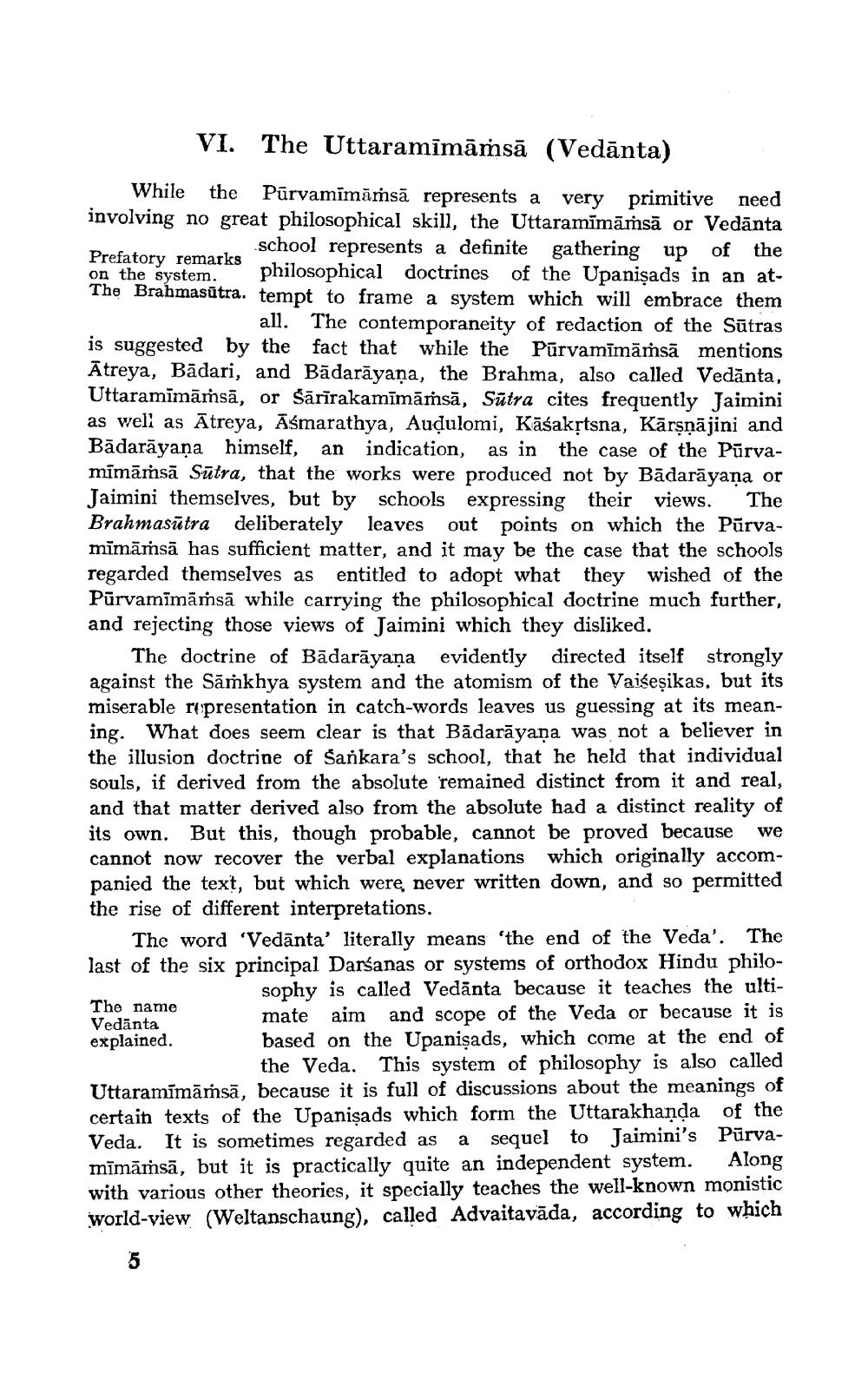________________
VI. The Uttaramīmāmsā (Vedānta)
Prefatory remarks on the system.
While the Pūrvamimāṁsā represents a very primitive need involving no great philosophical skill, the Uttaramīmāmsā or Vedānta school represents a definite gathering up of the philosophical doctrines of the Upaniṣads in an atThe Brahmasutra. tempt to frame a system which will embrace them all. The contemporaneity of redaction of the Sūtras is suggested by the fact that while the Purvamīmāṁsā mentions Atreya, Badari, and Badarāyaṇa, the Brahma, also called Vedanta, Uttaramīmāmsā, or Sārīrakamīmāmsā, Sutra cites frequently Jaimini as well as Atreya, Asmarathya, Auḍulomi, Kāśakṛtsna, Kārṣṇājini and Bādarāyaṇa himself, an indication, as in the case of the Purvamīmāmsā Sūtra, that the works were produced not by Badarāyaṇa or Jaimini themselves, but by schools expressing their views. The Brahmasutra deliberately leaves out points on which the Purvamīmāmsā has sufficient matter, and it may be the case that the schools regarded themselves as entitled to adopt what they wished of the Pūrvamīmāmsā while carrying the philosophical doctrine much further, and rejecting those views of Jaimini which they disliked.
The doctrine of Badarāyaṇa evidently directed itself strongly against the Samkhya system and the atomism of the Vaiseṣikas. but its miserable representation in catch-words leaves us guessing at its meaning. What does seem clear is that Badarāyaṇa was not a believer in the illusion doctrine of Sankara's school, that he held that individual souls, if derived from the absolute remained distinct from it and real, and that matter derived also from the absolute had a distinct reality of its own. But this, though probable, cannot be proved because we cannot now recover the verbal explanations which originally accompanied the text, but which were, never written down, and so permitted the rise of different interpretations.
The word 'Vedanta' literally means 'the end of the Veda'. The last of the six principal Darśanas or systems of orthodox Hindu philosophy is called Vedanta because it teaches the ultimate aim and scope of the Veda or because it is based on the Upanisads, which come at the end of the Veda. This system of philosophy is also called Uttaramīmāmsā, because it is full of discussions about the meanings of certain texts of the Upanisads which form the Uttarakhanda of the Veda. It is sometimes regarded as a sequel to Jaimini's Purvamīmāmsā, but it is practically quite an independent system. Along with various other theories, it specially teaches the well-known monistic world-view (Weltanschaung), called Advaitavada, according to which
5
The name Vedanta explained.




